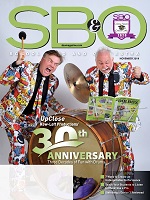Throughout my years as a private flute teacher, I have addressed a wide variety of technical problems among my students. Unfortunately, many of their issues are very common: poorly maintained instruments, improper hand position, and incorrect fingerings. Through experience, I have learned that the best remedy for many of these bad habits is to correct them as early as possible since they often become so ingrained after a period of a couple of years that they are nearly impossible to correct. It is my hope that I can help prevent the frustration of the flute student and their music instructors by providing some hints for teaching the beginner.
Flute Repair & Maintenance
Beginner flutists often have new or used flutes, which are in desperate need of repairs. They can be quickly discouraged when unable to produce a sound on such instruments. In a section full of other young flute players, it is hard for a director to distinguish a student who is simply having embouchure difficulty from one who may have a flute with leaking pads or keys. I urge band directors to take time at the beginning of the school year to “test play” their students’ flutes to find any obvious problems. Be sure to try the lowest notes of the instrument, which lie just below the staff, since these will be most susceptible to leaks. Many newer flutes have plastic or rubber “corks” which have trouble adhering to metal flutes. Keep some epoxy-type glue handy for re-attaching these to flutes.
Band directors can show students how to check the position of the large corks inside the headjoint using the cleaning rod. Students may need help moving the cork, if necessary. If the cork is too small to fit securely in the correct spot, it should be replaced. An improper fit of the cork can cause the tone to sound fuzzy.
Many students unknowingly cause damage to their flutes during assembly, so it can be helpful to teach students the proper way to put their instruments together. The most important point for students to remember is to avoid twisting the mechanism. When joining the headjoint to the body of the flute, hold both parts of the instrument above or below the keys and lip plate. Beginner flutes are often difficult to assemble because the joints do not fit properly. Be sure that students keep the tenons clean and free of tarnish if the fit is too tight. Any residue on the tenons can usually be easily removed using a cloth and rubbing alcohol. Applying oil or petroleum jelly is not recommended since these can leave a residue on the tenons or the pads.
During flute assembly, it is also important that students align their headjoint and footjoint properly. It is a common mistake of beginner flutists to push the headjoint all the way into the body. Flutes are designed so that the headjoint should be slightly pulled out in order to play in tune; ? inch is a good estimate for a beginner. The center of the tone hole of the headjoint should generally be aligned with the centers of the keys on the body. The primary rod of the footjoint should be aligned with the centers of the body’s keys. This alignment of the footjoint will be helpful to most young flutists who have small hands and may otherwise have trouble reaching all of the footjoint keys.
Students should also be encouraged to maintain their instruments by always swabbing the flute after playing, but warn against using key oil and polishing cloths. Oil can easily leak onto pads when applied by a student. Keys only need to be oiled about as frequently as a flute needs to be repaired, so it is usually best to leave oiling to a professional. Polishing cloths are specially treated to help remove tarnish, but these cloths can deposit a residue on pads and in the mechanism. If the pads become dirty and start to stick, please never recommend that students use a dollar bill to “clean” them. The best solution for sticking pads is to place un-gummed cigarette paper under the affected key and then firmly close the key over the paper to blot the pad. In order to avoid tearing the skin of the pad, never pull the paper out from under the key before releasing it. If simply blotting the pad does not relieve the sticking, the cigarette paper may be coated with rubbing alcohol before repeating the procedure.
The best prevention for sticking pads is for students to regularly swab their flutes and to avoid candy and sodas before (and during!) playing. Beginner flutes are usually built to stand up to some abuse, but teaching good habits can also assure that students will not damage a new advanced model flute in the future.
Proper Hand Position
The flute is perhaps rivaled only by the violin in terms of the awkwardness involved in holding the instrument. Starting beginner flutists with correct hand position and posture is crucial to their success. Beginners are often at a disadvantage because of the small size of their hands, which makes correct position even more important.
The thumb of the right hand serves a vital role by supporting the flute. It should generally be placed on the underside of the flute somewhere either underneath the index or middle finger or between the two. The right hand fingers should be curved slightly so that the entire hand is shaped like the letter “C.” Students can begin to prepare for an open-holed flute by trying to place their fingertips inside the round centers of the keys for good hand position. In the left hand, the index finger is the most important finger for hand position. The finger should be in contact with the side of the flute between the large knuckle of the finger up to the next knuckle. The index finger should wrap around and slightly underneath the flute in order to support the flute and bring it firmly to the chin. The flute can rest between the two knuckles as if sitting on a shelf. The index finger can then be free to wrap around the flute like a crook (a candy cane is a useful analogy for students) so that the fingertip can reach the C key. Students do not need to be concerned with getting their entire fingertip on top of the key as long as they can close it comfortably.
Proper posture not only includes proper hand position, but also proper arm position and sitting position. New flute students are often inclined to hold their flutes too high in an effort to imitate what they perceive as good posture. Ideally, the flute should be held with a comfortable tilt down to the right. This posture can further be encouraged by trying to give flute students adequate room in their rows within the band. If space is at a premium within a flute section, students can be positioned so that each successive player to the right sits slightly behind the player to their left. Additionally, flutists should sit with the lower body aimed slightly diagonally to the right of the upper half. This position can be encouraged by having flute students turn their chairs on the diagonal with their music stands either directly in front of them or slightly to the left. When two students are required to share a stand, be sure that it is placed more in front of the player to the left.
Correct Fingering
Assuming students are able to navigate the pitfalls of posture, the next subject to be broached is the use of correct fingerings. The most common mistakes include using incorrect fingerings for the first and second octave D and Eb. The index finger in the left hand must be down for these notes in the lowest register of the instrument, but lifted an octave higher.
Additionally, F# in all registers should be fingered using the ring finger of the right hand and not the middle finger. (Note that the middle finger can be used for F# in the highest register among advanced flutists to lower the pitch for better intonation.)
Another difficult note in terms of fingering is Bb/A#, in all registers. The complication stems from the fact that there are three useful ways to finger the note in the lower two registers. Most beginners first learn the “one + one” fingering, and although this is a useful fingering for beginners, it is probably the least commonly used by professionals. Obviously, the other Bb fingerings are very useful, so it is a good idea to teach these to students as soon as they are capable of learning them. The Bb thumb key fingering is especially useful in bands where students are usually playing in keys with flats.
Bb Using Thumb Key
This fingering eliminates the need to use any right hand fingers (except the pinky), so that an alternation between G and Bb, for example, becomes greatly simplified. It is important for students learning this new fingering to understand that they can leave their left thumb on the Bb thumb key on any note for which the thumb is down. The only exception to this rule is the third octave Gb/F#. The other possible Bb fingering uses the small lever key just to the left of the F key.
Bb Using Lever Key
This fingering for Bb/A# is especially useful when moving to and from B natural (or Cb) such as in the keys of Gb or B major or in chromatic passages.
The third octave Bb has its own unique fingering.
This note tends to be flat, especially in comparison to the surrounding third octave notes, which are often sharp. This tendency can be partially corrected by lifting the left index finger when fingering the note. Unfortunately, some fingering charts indicate that the index finger should be down, but many professional flutists recommend the opposite.
Although all of this advice on flute maintenance, posture, and fingerings may be useful, the best advice is to encourage students to take private lessons from a professional if possible. Lessons are often recommended only for the most advanced students, but the weaker students can benefit from them equally, if not more so. Private lessons can sometimes turn the weakest player into one of the strongest in a band.
Dr. Jennifer Rhyne is in her second year as flute instructor at Fort Hays State University in Hays, Kansas. She also directs a flute choir and maintains an active studio. Jennifer holds degrees from the Oberlin Conservatory of Music, the University of Michigan, and the State University of New York at Stony Brook.



























